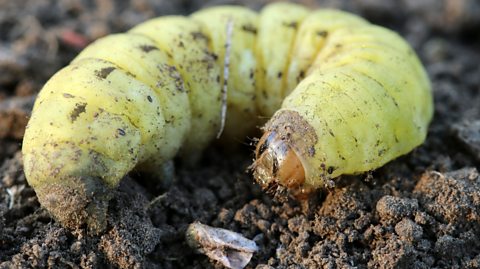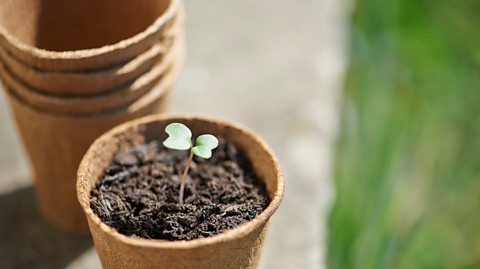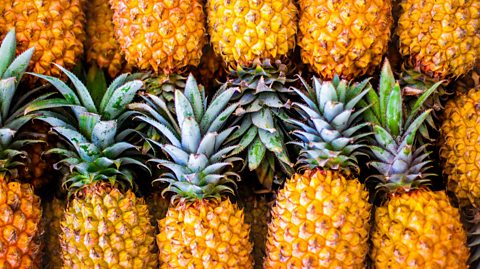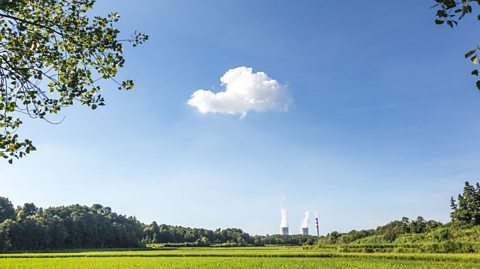Plastic was only invented in 1907, and since then has revolutionised many parts of our lives. But lots of the plastics made over 100 years ago could still be sitting in our landfill sites today, and that poses a bit of a problem.
In the UK alone, roughly five million tonnes (or five billion kilograms) of plastic is used every year. Some plastics take hundreds of years to biodegrade, and some never fully do, so it means a lot of it sits around in landfill sites. Our planet doesnÔÇÖt have infinite space, but lots of the ways we free it up currently, such as by burning the waste, are really bad for the environment.
But there are people across the world who are trying to find innovative solutions to tackle the issue, in ways that you might not expect.
A happy accident
Federica Bertocchini is a biologist at the Centre of Biological Research in Madrid, Spain.
SheÔÇÖs been researching how insects can help biodegrade plastics for years, and it all started when, one day, a happy and well-timed accident led to a breakthrough.
In her spare time, Federica keeps bees. She explained that beehives are susceptible to infestations of wax moth larvae, which when fully grown are also known as Galleria mellonella. Having found some in her beehives, she scooped out the larvae and put them in plastic bags. Returning to the bags a bit later, she found the worms had escaped, and there were lots of holes in the bag that definitely werenÔÇÖt there before.

So, how did the larvae do this? That question is a huge focus in FedericaÔÇÖs research now, and it can be narrowed to down to one of two options (or a combination of both): either the worm itself produces a chemical that breaks the plastic down, or the microbioma within the worm gut does that.
Federica has found evidence to suggest that the process is at least in part chemical, and says this discovery was one of the happiest moments in her research. This is because the ÔÇ£dreamÔÇØ scenario for her would be being able to isolate the chemical that biodegrades the plastic, in order to ÔÇ£make a cocktail and pour it on whatever pile of plastic you haveÔÇØ.
This she says could be done in landfill sites, but at the moment more needs to be figured out about the process, not least whether or not the product that the larvae excretes after biodegrading the plastic is safe for the environment, or biodegradable itself.
But she says that it's important to look into into as an accompanying waste management method to the ones we already have, such as recycling. This is because she says that while recycling is effective at reusing materials and preventing us from making more, it doesn't actually get rid of the plastic we make.
A team effort
The Nano Nerds are a US-based team of teenagers who, in 2016, invented the Polystyrenator - a machine that harnesses a type of bacteria that can biodegrade polystyrene. Not only that, but the process creates a biodegradable plastic called PHA, and energy in the form of methane.
Emily (18), Diya (18), Advait (17) and Akhil (18), who are now all at different colleges around the country, created the team when they were in fourth grade (year 5 in the UK) for a competition. Diya explains that ÔÇ£the year that we created the Polystyrenator, our theme was ÔÇİTrash TrekÔÇÖ, so you had to choose a piece of trash and create an innovative solution regarding that.ÔÇØ
 Image source, Nano Nerds
Image source, Nano NerdsSo, how does it work? The machine first melts polystyrene into oil in one chamber, and the bacteria is unleashed upon the oil in another.
ÔÇ£The bacteria is called Psuedomonas putida and it can break down styrene oil, which is the a molecule that can be bonded to other identical molecules to form a polymer. of styrofoam,ÔÇØ Advait explains. What you end up with is a new biodegradable plastic, as well as energy which, the team explains, can be used to power the machine.
Their inspiration came from the fact that while polystyrene is currently being recycled, this doesnÔÇÖt solve the problem as the polystyrene still exists to eventually end up in landfills.
ÔÇ£When we were picking what trash piece we wanted to use, we looked at what trash pieces affect landfills the most,ÔÇØ Akhil explains. ÔÇ£Styrofoam takes millions of years to biodegrade."
The team describe what their machine does as ÔÇ£upcyclingÔÇØ, as the plastic the process produces can be used to make things such as medical equipment. Finding ways to reuse plastic is something the group say the people around their age theyÔÇÖve been meeting through science competitions have a keen interest in: ÔÇ£We're going to be living with more of this trashÔÇĞ So I feel like it's becoming more of a pressing issue for the younger generations,ÔÇØ says Emily.
And while they admit that itÔÇÖs taken them a lot of trial and error to get to where they are now, which is working on a prototype, Emily thinks that this shouldnÔÇÖt put potential inventors off.
ÔÇ£I feel like it seems really intimidating to a lot of people when they're starting out. But I think it's one of those things where you have to be determined and actually spend the time to read up on one subject and learn a lot about it, and keep improving and listening to feedback. And it's okay to mess up.ÔÇØ
And as Diya puts it: ÔÇ£Everybody starts somewhere.ÔÇØ
Five amazing biodegradable inventions which could potentially replace plastic
What is 'biodegradable' and what do these amazing inventions mean for the future of plastic?

Four things you didnÔÇÖt know you could do with food waste
Before you chuck it out, read this!

How much do you really know about climate change?
We are always hearing about it in the news, but have you been paying attention?
